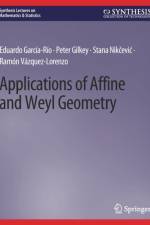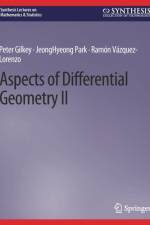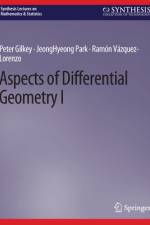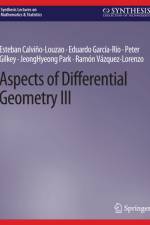av Eduardo Garcia-Rio
447
Pseudo-Riemannian geometry is, to a large extent, the study of the Levi-Civita connection, which is the unique torsion-free connection compatible with the metric structure. There are, however, other affine connections which arise in different contexts, such as conformal geometry, contact structures, Weyl structures, and almost Hermitian geometry. In this book, we reverse this point of view and instead associate an auxiliary pseudo-Riemannian structure of neutral signature to certain affine connections and use this correspondence to study both geometries. We examine Walker structures, Riemannian extensions, and Kahler--Weyl geometry from this viewpoint. This book is intended to be accessible to mathematicians who are not expert in the subject and to students with a basic grounding in differential geometry. Consequently, the first chapter contains a comprehensive introduction to the basic results and definitions we shall need---proofs are included of many of these results to make it as self-contained as possible. Para-complex geometry plays an important role throughout the book and consequently is treated carefully in various chapters, as is the representation theory underlying various results. It is a feature of this book that, rather than as regarding para-complex geometry as an adjunct to complex geometry, instead, we shall often introduce the para-complex concepts first and only later pass to the complex setting. The second and third chapters are devoted to the study of various kinds of Riemannian extensions that associate to an affine structure on a manifold a corresponding metric of neutral signature on its cotangent bundle. These play a role in various questions involving the spectral geometry of the curvature operator and homogeneous connections on surfaces. The fourth chapter deals with Kahler--Weyl geometry, which lies, in a certain sense, midway between affine geometry and Kahler geometry. Another feature of the book is that we have tried wherever possible to find the original references in the subject for possible historical interest. Thus, we have cited the seminal papers of Levi-Civita, Ricci, Schouten, and Weyl, to name but a few exemplars. We have also given different proofs of various results than those that are given in the literature, to take advantage of the unified treatment of the area given herein.




